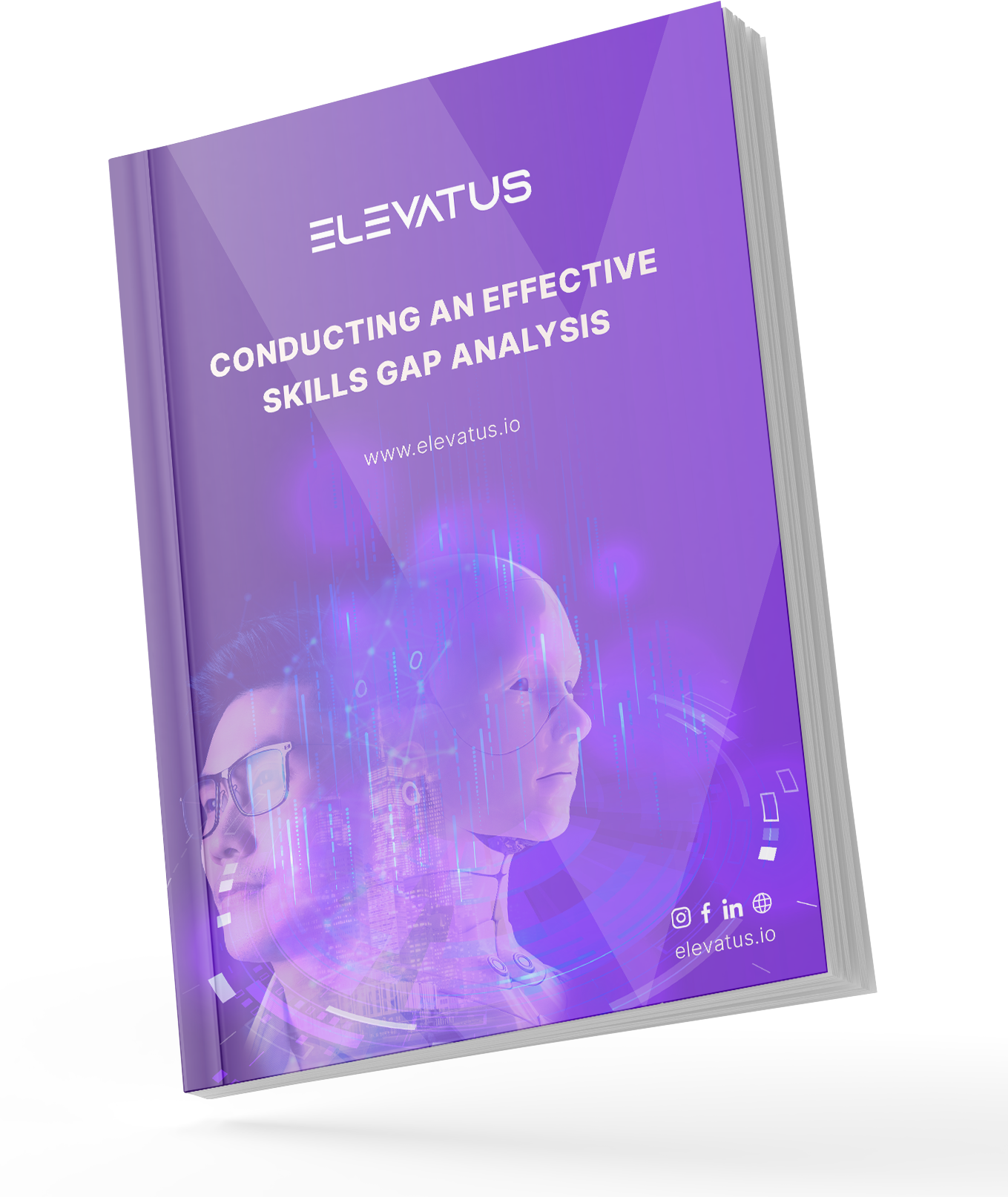
Crafting an Effective Hiring Criteria: A Strategic Four-Step Approach
February 15, 2024
Reem Al-Tamimi
Content Writer
Why is it so important to have clear hiring criteria? Well, think about it this way:
In a super competitive world, every decision you make can really shape where your company is headed. It’s not just about finding someone to fill a job—it’s about investing in your team’s future. Right now, the competition for great talent in creative, marketing, digital, and proposal areas is fierce. Hiring the wrong person doesn’t just cost money—it can slow things down, mess up projects, and bring down team spirit.
And let’s face it, dusting off the same old job description every time a role opens up is like replaying a movie, hoping for a different ending. Instead, you can view the hiring process as a golden opportunity to take a step back, evaluate your team’s needs, and realign your goals. This isn’t merely about backfilling a position; it’s a chance to conduct a health check for your department, ensuring it’s thriving and ready to conquer future challenges.
How about we shake things up? Let’s turn hiring into a smart strategy for crafting your dream team. When you set clear criteria for who you want to hire, it’s not just about plugging a hole—it’s about handpicking the people who will shape your company’s future. Are you ready to assemble a team that’s perfect for today and ready to tackle tomorrow’s challenges?
Wonderful! Let’s dig right into it, shall we?
Make the right hires every time
Learn how our award-winning ATS can help you use AI and automation to save time, eliminate manual tasks, and hire at an enterprise scale – but without the complexity.
Show me howThe Power of Precise Hiring Criteria


Understanding hiring criteria goes beyond mere formality – it’s the foundation of assembling a standout team. While ensuring candidates check off all the necessary skills and experience is crucial, it’s equally important to find someone who will make a positive impact on your company’s culture and goals. The criteria for hiring employees, detailed in job descriptions and postings, provide a transparent roadmap of what you’re seeking in your next team member.
By clearly defining hiring criteria, the recruitment process becomes more focused and effective. This clarity offers HR and hiring managers a precise idea of the qualities and qualifications essential for the role, ensuring the search is targeted towards candidates who not only meet these requirements but also align with the company’s ethos and ambitions. Moreover, having defined criteria for hiring employees aids in making well-informed decisions, extending beyond hiring to include internal promotions, thereby striking a balance between promoting from within and ensuring the individual fits the role perfectly.
Ultimately, establishing clear hiring criteria refines the hiring process, setting straightforward expectations from the start. This methodical approach facilitates the selection of candidates who are not just competent but are truly in sync with the company’s culture and forward-looking goals. It’s about embracing informed, objective decision-making that fosters the organization’s ongoing success and development.
4 Crucial Steps to Developing Effective Hiring Criteria


Ready to ensure your team is packed with the right talent? Crafting effective criteria for hiring new employees is a strategic move toward organizational success. In this section, we’ll walk you through developing a strong hiring framework that aligns with your organizational goals and culture. This section will ultimately help you get started on fine-tuning your recruitment strategy to build a team that drives your mission forward.
Analyze Organizational Needs and Job Requirements
Setting the right selection criteria for hiring employees starts with a deep dive into what your organization truly needs and what each job entails. It’s about getting to know the ins and outs of your company – its mission, goals, and the culture that defines it – as well as the nitty-gritty of the role you’re looking to fill. This step is crucial for crafting hiring criteria that not only target candidates with the necessary skills and experience but also those who can positively impact your team’s dynamics and productivity. By carefully considering the skills, experience, and educational background needed, you ensure your search is laser-focused on finding the perfect fit.
Assess goals to ensure they align with organizational strategy.
Conduct a thorough job analysis to delineate role specifics.
Accurately pinpoint skill gaps within the existing team.
Anticipate forthcoming changes and adjust role requirements accordingly.
Clearly outline the necessary qualifications for each role.
Collaborate closely with stakeholders to fine-tune job specifications.
Define Core Competencies and Skills
Identifying core competencies and skills is a key step in shaping hiring criteria that pave the way for successful hires. This involves zeroing in on the must-have abilities and traits for candidates to excel in their roles and advance the company’s goals. You’ll need to balance the scale between hard skills – like technical knowledge or specific certifications – and soft skills, such as teamwork, communication, and adaptability. Clarifying these competencies within your hiring criteria simplifies the recruitment process, allowing you to more efficiently find candidates who are not just capable but also a great match for your organization’s culture and requirements.
Conducting An Effective Skills Gap Analysis
Discover the key to building high-performing teams and boosting organizational success through effective skills gap analysis, optimizing strengths for continual growth.
Download your eBook today!

Incorporate Diversity, Equity, and Inclusion (DEI) Principles
Embedding DEI principles within your hiring criteria serves as both an ethical obligation and a strategic boon. A focus on diversity, equity, and inclusion enhances your company’s culture, sparks innovation, and mirrors the varied viewpoints of your clientele. It’s about crafting recruitment practices that welcome and value diversity, actively pursuing a broad range of talents, and ensuring your criteria are fair and inclusive. Prioritizing DEI in your hiring process leads to a team that’s not only more vibrant and inventive but also stronger and more adaptable to change.
Implement and Continuously Review the Hiring Criteria
The last step in crafting effective hiring criteria is their implementation and consistent reassessment. After setting your criteria, weaving them into your recruitment efforts and job postings is crucial. But remember, the process doesn’t end with implementation. It’s vital to regularly evaluate how well your hiring criteria are serving your organization, ensuring they stay relevant to your needs and responsive to shifts in industry trends. This ongoing review process offers opportunities to fine-tune your hiring practices, keeping them in step with your strategic goals and the dynamic nature of the job market.
Frequently Asked Questions About Hiring Criteria


What are the hiring criteria?
Hiring criteria refer to the specific qualities, skills, experiences, and qualifications that an organization identifies as necessary for a candidate to succeed in a particular role. These criteria are used throughout the recruitment process to assess and select the most suitable candidates.
Why are hiring criteria important?
Establishing clear hiring criteria is crucial for efficiently and effectively identifying candidates who not only meet the technical requirements of a job but also align with the company’s culture and values. This strategic approach helps ensure a good fit, which can lead to higher job satisfaction, better performance, and lower turnover rates.
How can we ensure our hiring criteria support diversity and inclusion?
To support diversity and inclusion, organizations should develop hiring criteria that are free from biases related to age, gender, ethnicity, and other personal characteristics. This involves focusing on skills, competencies, and experiences directly relevant to the job. Additionally, including diverse perspectives in the criteria-setting process can help identify and mitigate potential biases.
Transitioning from hiring theory to practical implementation has never been simpler. Explore our curated selection of HR Resources crafted by experts. Simply browse our online collection, select the resources that align with your hiring requirements, and effortlessly customize them to suit your organization’s unique vibe—all at no cost to you!
Discover more Practical Tips for HR and resources you need:
Turn top talent to employees fast
Hire, assess, onboard and manage top talent for every job. See how Elevatus streamlines everything; from acquire to new hire.
Request a demoAuthor
Reem Al-Tamimi
Don't miss a thing!
Stay one step ahead. Subscribe and get the latest updates, news, and insights from Elevatus straight to your inbox.






